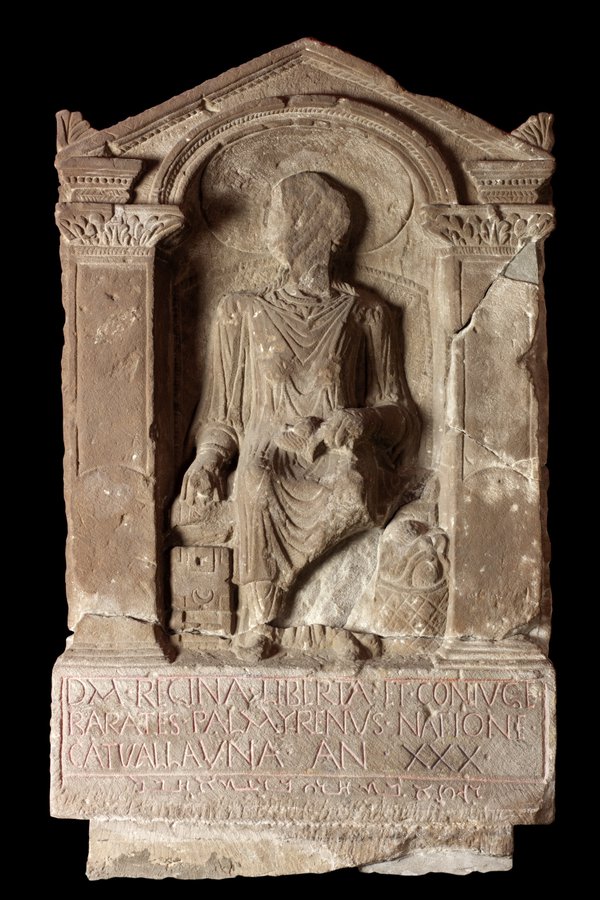About Arbeia, South Shields Roman Fort
A key garrison and military supply base

Standing above the entrance to the River Tyne, Arbeia, South Shields Roman Fort guarded the main sea route to Hadrian's Wall. It was a key garrison and military supply base to other forts along the Wall and is an important part of the history of Roman Britain.
Through the course of history Arbeia has had several guises: from the Roman Emperor's HQ for the Scottish invasion to a busy cosmopolitan port. It has hosted dramatic tales of murder, fire, and holds the key to ancient love stories. It was a huge supply base for the Roman army, home to 600 Roman troops and is said to be the birth place of the Northumbrian King Oswin. It is also a UNESCO World Heritage site with the finest full-scale Roman reconstructions in the country showcasing some of the most significant finds from that time.
Step into the fort and immerse yourself in the world of the Romans right in the heart of South Shields. Explore inside the full-scale reconstructed Roman buildings including the West Gate, Commanding Officer's house and a soldier's barrack block, and see one of the finest collections of finds from Roman Britain, all found in and around Arbeia.
Stories are brought to life at Arbeia through a variety of events and displays including gladiator battles, falconry displays, Roman re-enactments, storytelling and more.
The Regina Tombstone

| The tombstone records a British woman called Regina, who originally came from south-east England, from the tribe of the Catuvellauni (based round St Albans). At some stage Regina becomes the slave of Barates, from Palmyra in Syria. He later frees her, she becomes a ‘freedwoman’, and he marries her. Regina and Barates would have lived in the civilian settlement outside the fort. Barates was probably a trader, dealing with the army. When she died aged 30, he had this expensive tombstone made for her. It is Roman in style and has a Latin inscription which reads: ‘To the spirits of the dead and to Regina of the Catuvellauni, freedwoman and wife, age 30, Barates of Palmyra [set this up]’ Uniquely in Britain, below the Latin is a second inscription in Barates’ own language, Aramaic, which reads: 'Regina, freedwoman of Barates, alas.’ The tombstone was probably carved by a Palmyrene (not Barates) – the Aramaic is more confident than the Latin (a corrected letter can be seen in the Latin inscription) – indicating there were other Syrians living at South Shields. The tombstone is late second century |
Regina is shown sitting in a wicker chair (a mainstream type of Roman chair), with spinning in her hands (spinning thread was a very feminine thing to do, and shows she was dutiful and industrious, etc. She is also opening up a box, presumably to show off money or jewellery (key hole visible on box, so must be for valuables of some type). She is wearing provincial clothing, the type of gown that was fashionable in Britain at the time, but not worn in Rome.
This tombstone is evidence for immigration and the mixing of cultures 1800 years ago and shows a mix of mainstream Roman, provincial Roman, native and immigrant cultures.
Iron Ring-Mail

The iron ring-mail is a complete Roman chain-mail shirt which was lost during a huge fire at the fort in the late third or early fourth century. It was overlooked when the burnt-down barrack was demolished before rebuilding work could take place and is unusually well-preserved. Made up of over 50,000 links, the preservation is so good that the heads of the rivets in the links, less than 1mm across, are still visible. The shirt is of standard Roman construction with four links looped onto one and with alternate lines of riveted and solid links. The solid links have an external diameter of 7mm and are possibly closed by welding, whilst the riveted links are often slightly larger (8mm in external diameter) and are frequently oval rather than circular. A number of the links have lost their rivets and the terminals have sprung slightly apart.
The ring-mail shirt was recovered during the 1997 excavations at Arbeia which concentrated on the barrack which had been destroyed by fire in the late or early fourth century. The shirt had been sandwiched between layers of hot, very dry daub and therefore sealed which is why it was in such good condition when recovered. It is one of the best surviving pieces of Roman iron to be found at Arbeia.
Few complete Roman ring-mail shirts have been recovered in this country.

/https://s3-eu-west-1.amazonaws.com/atwam-images-files/production/images/content/arbeiaromanfort/2018-02/182407.jpg)
/https://s3-eu-west-1.amazonaws.com/atwam-images-files/production/images/content/arbeiaromanfort/2018-02/182410.jpg)
/https://s3-eu-west-1.amazonaws.com/atwam-images-files/production/images/content/arbeiaromanfort/2018-07/212930.jpg)



